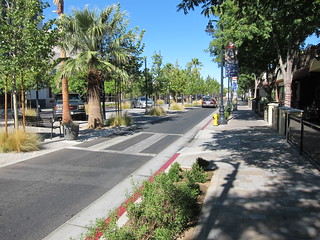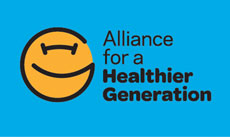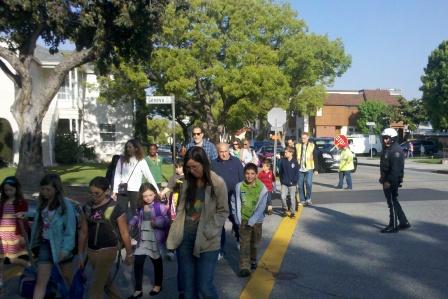
Resource Library
The Safe Routes to Parks is a research-backed intervention to boost rates of physical activity that can have positive health benefits. In a systematic review, the Community Preventive Services Task Force found a significant increase in physical activity related to parks, greenways, and trails when they are paired with at least one other intervention – community engagement, structured programs, public awareness, and/or access enhancements. Safe Routes to Parks is a programmatic way to apply that research to boost physical activity in your community. This factsheet outlines five actions champions can take to get started.
The Safe Routes Partnership has pulled together resources to help applicants successfully win Safe Streets and Roads for All funding. In 2025, there is $1 billion available for communities through the Safe Streets and Roads for All program to develop plans and implement strategies to improve roadway safety. Applications are as short as two pages, and chances of success are very high. The deadline is June 26, 2025. The Safe Routes Partnership is here to help you win this funding.
Helpful Information
Frequently Asked Questions
More Information about SS4A
Worksheets
Digital versions of the below worksheets are available to copy and reuse for your community via Google. Google will prompt you to make a copy of the worksheet first.
Want to edit it in Word? Click File > Download
SS4A Implementation Grant Worksheet
SS4A Demonstration Worksheet
 How can we better promote walking and bicycling to school among girls? Studies show that the odds of walking and bicycling to school are 40 percent lower in girls than in boys (Giles-Corti et al, 2011;
How can we better promote walking and bicycling to school among girls? Studies show that the odds of walking and bicycling to school are 40 percent lower in girls than in boys (Giles-Corti et al, 2011;


THE TREE TRUNK
 Next week, the City of Long Beach will host Pro Walk Pro Bike, a multiday conference that will bring together advocates from across the country.
Next week, the City of Long Beach will host Pro Walk Pro Bike, a multiday conference that will bring together advocates from across the country.

 We frequently hear about successful programs getting more youth bicycling and walking to school. But behind those programs are one or more dedicated people, often teachers that make it happen. Pat Davidson is one of them.
We frequently hear about successful programs getting more youth bicycling and walking to school. But behind those programs are one or more dedicated people, often teachers that make it happen. Pat Davidson is one of them.
 October is such a great time of year.Everywhere I look lately, no matter what city or town I am visiting, I see more children and families walking and bicycling to school, the park, other destinations and just for fun.
October is such a great time of year.Everywhere I look lately, no matter what city or town I am visiting, I see more children and families walking and bicycling to school, the park, other destinations and just for fun.
 The Alliance for a Healthier Generation, founded by the American Heart Association and the William J. Clinton Foundation, was formed in 2005 as a response to the dramatic increase in prevalence of childhood obesity across the nation.
The Alliance for a Healthier Generation, founded by the American Heart Association and the William J. Clinton Foundation, was formed in 2005 as a response to the dramatic increase in prevalence of childhood obesity across the nation.
 The Transportation Improvement Program (TIP) is a region’s approved list of specific transportation projects mandated by federal law. It serves as a multi-year financial schedule for obligating federal funds to state and local transportation projects. The TIP contains funding information for all modes of transportation including bicycle and pedestrian projects.
The Transportation Improvement Program (TIP) is a region’s approved list of specific transportation projects mandated by federal law. It serves as a multi-year financial schedule for obligating federal funds to state and local transportation projects. The TIP contains funding information for all modes of transportation including bicycle and pedestrian projects.
 I recently had the privilege of speaking at the Fairfax County Bike Summit. It was the first Bike Summit in the county. Fairfax County has come a long way through the work of the Fairfax Advocates for Better Bicycling.
I recently had the privilege of speaking at the Fairfax County Bike Summit. It was the first Bike Summit in the county. Fairfax County has come a long way through the work of the Fairfax Advocates for Better Bicycling.
Florida has had great success with Safe Routes to School under SAFETEA-LU, with more than 235 applications ($68.8 million) being funded. The average Safe Routes to School project funded was $292,766. There has been a call for infrastructure applications each fall through spring. Spring 2012 ended the 6th call for projects. These projects will be in the 2017 work program. The average return on these projects was an increase of 22 percent of children walking to and from school. The program works!
 There are a number of exciting Safe Routes to Schools initiatives taking place around the state of Mississippi and the momentum continues. The Mississippi Department of Transportation’s Safe Routes to School program has opened up its fourth funding cycle.
There are a number of exciting Safe Routes to Schools initiatives taking place around the state of Mississippi and the momentum continues. The Mississippi Department of Transportation’s Safe Routes to School program has opened up its fourth funding cycle.
The School Site Audit will help determine walking and bicycling conditions on or adjacent to school property. Similar to the School Site Audit, the Neighborhood Site Audit is designed to help you evaluate the walking and bicyclingconditions by inventorying neighborhood intersections, streets, and sidewalks used by the students.
This report describes how student school travel in the U.S. changed from 1969through 2009 using information from the 2001 and 2009 National HouseholdTravel Survey (NHTS) and the 1969 and 1995 Nationwide Personal TransportationSurveys (NPTS).




